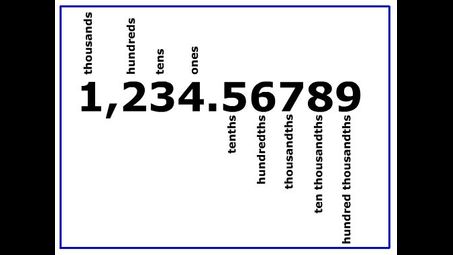What else can I help you with?
Is 4.1 or 4.11 greater?
To determine which number is greater, we can compare the digits place by place starting from the left. In this case, the first digit after the decimal point is the tenths place. In 4.1, the digit in the tenths place is 1, and in 4.11, the digit in the tenths place is also 1. Since these digits are the same, we then compare the next digit after the tenths place, which is the hundredths place. In 4.1, the hundredths place is 0, and in 4.11, the hundredths place is 1. Therefore, 4.11 is greater than 4.1.
What is the name of a number that has a digit in the tenths place hundredths place and beyond?
The name of such a number is a decimal number. The digits after the decimal point represent tenths, hundredths, thousandths, and so on.
In the number 4658.219 what digit is in the hundredths place?
In the number 4658.219, the digit in the hundredths place is 1. The hundredths place is the second digit to the right of the decimal point. In this case, the digits to the right of the decimal are 2 (tenths) and 1 (hundredths).
What is the value of the number in the hundreths place for 6.185?
The number in the hundredths place for 6.185 is 8. In the decimal number, the digits to the right of the decimal point represent tenths, hundredths, and thousandths, respectively. Therefore, the first digit after the decimal (1) is the tenths place, and the second digit (8) is the hundredths place.
Which digit is in the tenths place in 45.86?
It is the 8, after the decimal you start with tenths, hundredths, thousandths, so on
What is the value of the digit in 3.59?
the 3 digits is the ones place the 5 digits is the tenths place the 9 digits is the hundredths place
Is 4.1 or 4.11 greater?
To determine which number is greater, we can compare the digits place by place starting from the left. In this case, the first digit after the decimal point is the tenths place. In 4.1, the digit in the tenths place is 1, and in 4.11, the digit in the tenths place is also 1. Since these digits are the same, we then compare the next digit after the tenths place, which is the hundredths place. In 4.1, the hundredths place is 0, and in 4.11, the hundredths place is 1. Therefore, 4.11 is greater than 4.1.
What is the name of a number that has a digit in the tenths place hundredths place and beyond?
The name of such a number is a decimal number. The digits after the decimal point represent tenths, hundredths, thousandths, and so on.
What two decimals with digits in the hundredths place that could be rounded to the tenths place as 0.4?
This could be anything from 0.35 to 0.44 if just talking about figures in the hundredths place
In the number 4658.219 what digit is in the hundredths place?
In the number 4658.219, the digit in the hundredths place is 1. The hundredths place is the second digit to the right of the decimal point. In this case, the digits to the right of the decimal are 2 (tenths) and 1 (hundredths).
What is the value of the number in the hundreths place for 6.185?
The number in the hundredths place for 6.185 is 8. In the decimal number, the digits to the right of the decimal point represent tenths, hundredths, and thousandths, respectively. Therefore, the first digit after the decimal (1) is the tenths place, and the second digit (8) is the hundredths place.
Name two decimals with digits in the hundredths place that could be rounded the the tenths place as 0.4?
I don't give beep bout thus
Which is bigger 0.3 or 0.035?
To determine which number is bigger between 0.3 and 0.035, we can compare them by looking at the place value of the digits. In 0.3, the 3 is in the tenths place, while in 0.035, the 3 is in the hundredths place. Since the tenths place is greater than the hundredths place, 0.3 is bigger than 0.035.
Which digit is in the tenths place in 45.86?
It is the 8, after the decimal you start with tenths, hundredths, thousandths, so on
What place value comes after tenths?
The place value after tenths is hundredths.
Which digit is in the tenths place 3.24?
3.24 ^^^ | | | | | The hundredths place | The tenths place The ones place The 2 is in the tenths place
Tenths and hundredths place?
where is the hudreth place?

